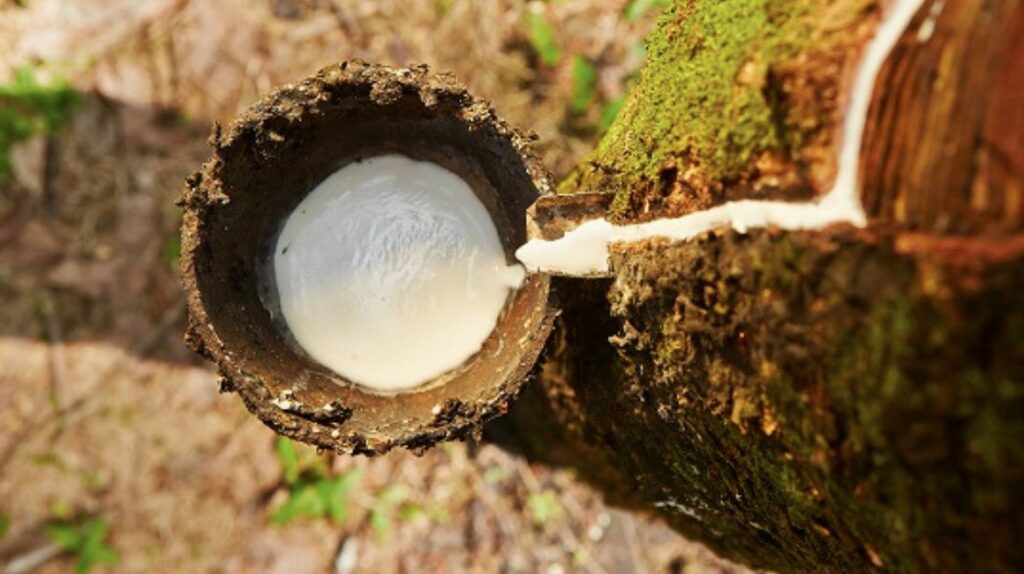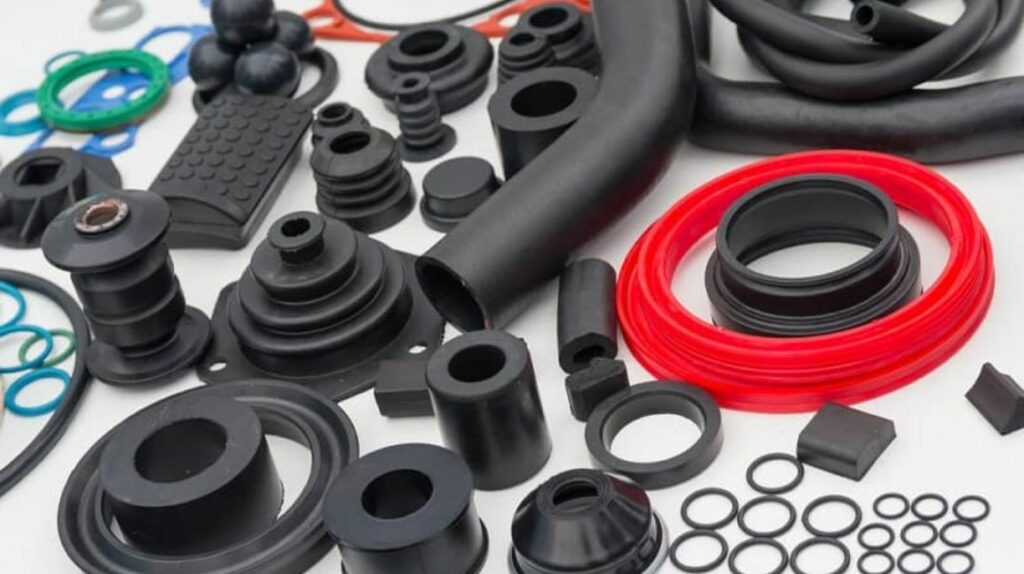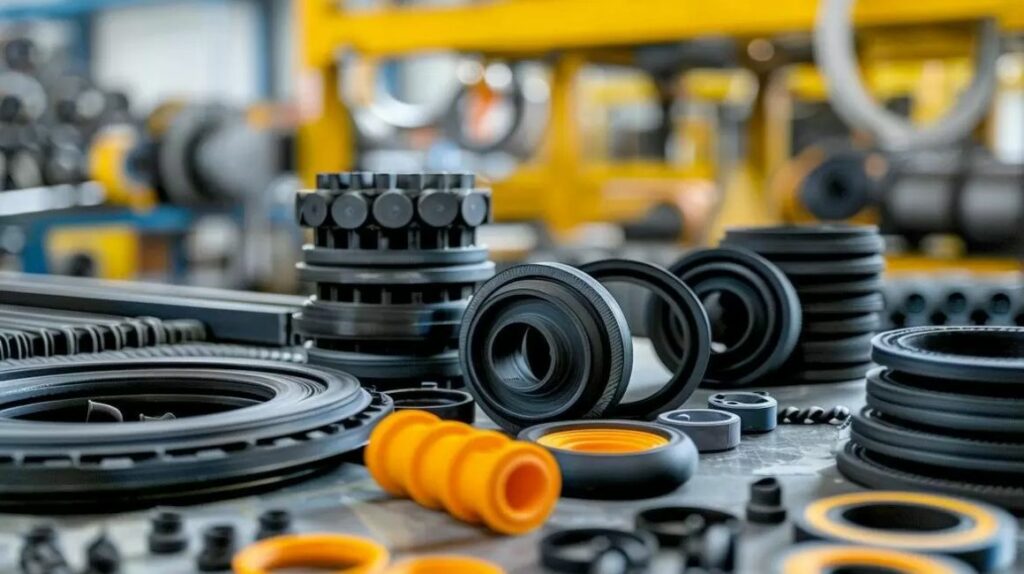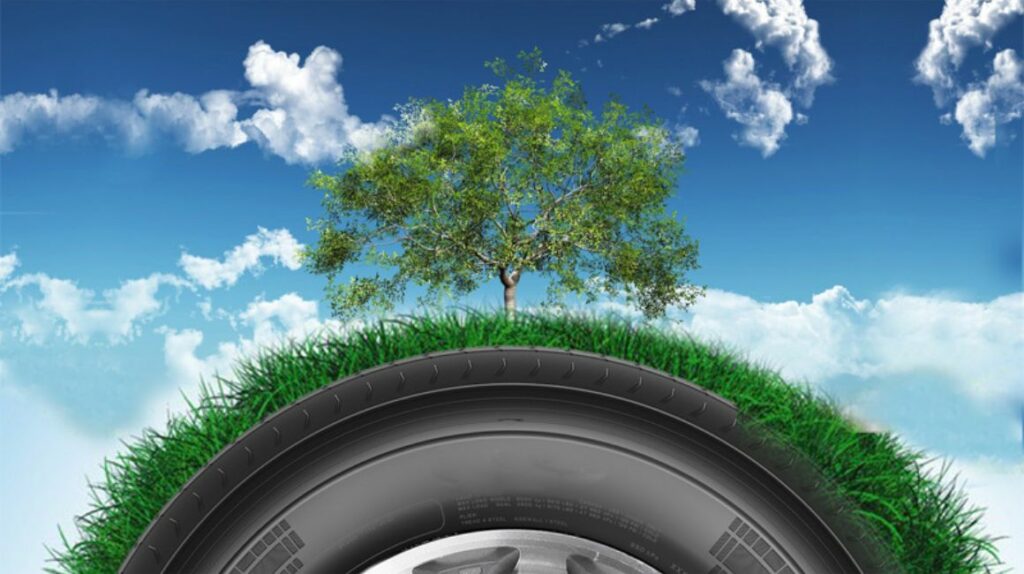Mục lục
ToggleVietnam has emerged as a key player in the global rubber supply chain; however, the industry faces mounting challenges, including volatile prices and sustainability pressures. Despite being one of the world’s top rubber exporters, gaps in processing technology, traceability, and value-added production continue to hinder its full potential. In this article, FBC explores the current state of Vietnam’s rubber sector and what must change to move from quantity-driven exports to a value-oriented supply chain.

Overview of Vietnam’s Rubber Industry
Vietnam’s rubber industry represents one of Southeast Asia’s most dynamic manufacturing sectors, with the country establishing itself as a significant player in the global rubber market. The nation’s strategic position in ASEAN has enabled it to capture substantial market share across multiple rubber segments, from natural rubber production to advanced synthetic applications.
Vietnam currently ranks among the top five rubber producers globally, with natural rubber production exceeding 1.2 million tons annually. The industry’s growth trajectory demonstrates remarkable resilience, with compound annual growth rates averaging 6.8% over the past five years. This expansion reflects not only increased domestic demand but also Vietnam’s growing role as a key supplier to international markets, particularly within ASEAN and broader Asian manufacturing networks.
The country’s rubber industry directly supports over 200,000 jobs across the plantation, processing, and manufacturing sectors. This employment base spans from traditional rubber farming communities in southern provinces to sophisticated manufacturing facilities in industrial zones near Ho Chi Minh City and Hanoi. The industry’s contribution to Vietnam’s export revenue has grown consistently, reaching approximately $3.2 billion in 2023, representing nearly 1.2% of total national exports.
Vietnam’s integration into global supply chains has accelerated through strategic partnerships with multinational corporations seeking reliable sourcing alternatives. The country’s membership in comprehensive trade agreements, including the Comprehensive and Progressive Trans-Pacific Partnership (CPTPP) and the EU-Vietnam Free Trade Agreement, has reduced tariff barriers and enhanced market access for Vietnamese rubber products. These developments position Vietnamese manufacturers to capitalize on shifting global supply chain preferences, particularly as companies diversify sourcing strategies beyond traditional markets.

Types of Rubber in Vietnam’s Manufacturing Sector
Vietnam’s rubber manufacturing landscape encompasses diverse product categories, each serving distinct market segments and industrial applications. Understanding these variations helps procurement managers and production executives make informed sourcing decisions aligned with their specific operational requirements.
- Natural rubber production and processing in Vietnam
Natural rubber production in Vietnam centers primarily in the southern provinces, where favorable climate conditions support large-scale plantation operations. The country processes approximately 85% of its natural rubber output domestically, with modern processing facilities capable of producing various grades meeting international quality standards. Vietnamese natural rubber typically achieves Technical Standard Vietnamese Rubber (TSVR) specifications, ensuring consistency for downstream manufacturing applications.
Processing capabilities include concentrated latex production, which serves specialized applications in medical devices and consumer goods manufacturing. Vietnam’s natural rubber processing sector has invested heavily in automation and quality control systems, enabling consistent product delivery to international customers. The country’s natural rubber exports primarily serve tire manufacturing, automotive components, and industrial applications across ASEAN markets and beyond.
- Synthetic rubber applications in the Vietnamese industry
Vietnam’s synthetic rubber sector has experienced rapid expansion, driven by growing domestic automotive and electronics manufacturing. Local production facilities now manufacture styrene-butadiene rubber (SBR), nitrile rubber (NBR), and ethylene propylene diene monomer (EPDM) rubber, serving diverse industrial applications. These synthetic varieties offer enhanced performance characteristics for specific applications, including temperature resistance, chemical compatibility, and mechanical durability.
The automotive sector represents the largest consumer of synthetic rubber in Vietnam, accounting for approximately 40% of total consumption. Electronics manufacturing follows closely, utilizing synthetic rubber compounds in cable insulation, gaskets, and protective components. Vietnam’s synthetic rubber manufacturers have established quality management systems aligned with international automotive standards, including ISO/TS 16949 certification, ensuring product reliability for demanding applications.
- Silicone rubber: Growing demand and applications
Silicone rubber represents Vietnam’s fastest-growing rubber segment, with annual demand increasing by 12% over the past three years. This growth reflects expanding applications in electronics, healthcare, and food-grade manufacturing, where silicone rubber’s unique properties provide superior performance compared to conventional alternatives.
Vietnamese manufacturers increasingly specify silicone rubber for high-temperature applications, chemical-resistant components, and food-contact surfaces. The electronics sector drives significant silicone rubber demand, particularly for smartphone manufacturing and electronic component production. Medical device manufacturing also contributes substantially to demand growth, as silicone rubber meets stringent biocompatibility requirements essential for healthcare applications.
- Key differences and market segments for each type
Key market segments for silicone rubber include automotive gaskets and seals, electronic component encapsulation, and industrial molding applications. Vietnamese suppliers have developed specialized formulations addressing specific customer requirements, including flame-retardant grades for electronics and food-grade compounds for packaging applications.

Read more: Biodegradable Packaging: Sustainable Solutions for Vietnam’s Supply Chain
Global Rubber Price Trends Impacting Vietnamese Suppliers
Understanding global rubber price dynamics proves essential for Vietnamese manufacturers seeking to optimize procurement strategies and maintain competitive positioning. Price volatility in rubber markets creates both challenges and opportunities for supply chain managers across multiple industries. This analysis examines key pricing factors and strategic sourcing approaches that enable Vietnamese companies to navigate complex market conditions effectively.
Global & Local Pricing and Strategic Sourcing
Global rubber prices respond to multiple interconnected factors, including weather patterns affecting natural rubber production, crude oil prices impacting synthetic rubber costs, and broader economic conditions influencing demand patterns. Natural rubber prices typically exhibit seasonal variations, with monsoon seasons in major producing regions creating supply uncertainties that drive price volatility.
Currency fluctuations add another layer of complexity to rubber pricing dynamics. Vietnamese dong volatility against major trading currencies, particularly the US dollar and Chinese yuan, affects import costs for synthetic rubber raw materials and export competitiveness for finished products.
Strategic sourcing for Vietnamese Manufacturers Factors
- Analysis of rubber price charts and market indicators
In early 2025, global rubber prices experienced notable fluctuations due to tight supply and rising demand. According to Trading Economics, natural rubber prices fell by 15.91% since the beginning of the year, reflecting increased market volatility (Trading Economics, 2025).
Meanwhile, the Vietnam Rubber Association projected that rubber exports could reach $11 billion in 2025, up 10% year-on-year, indicating the sector’s strategic importance for the national economy (VietnamPlus, 2025).
Additional data from ChemAnalyst noted that rubber prices surged in Q1/2025 due to El Niño and aging plantations reducing tapping capacity, contributing to price instability across Asian markets (ChemAnalyst, 2025).
- Impact of the Shanghai rubber market on ASEAN pricing
The Shanghai Futures Exchange (SHFE) plays a central role in rubber pricing across ASEAN. As of May 2025, TSR20 rubber futures on SHFE were trading at 173.7 US cents/kg, nearly 10% below Thai STR20 prices, creating regional arbitrage opportunities (Ainvest, 2025).
In Vietnam, domestic rubber prices remained relatively stable in late May 2025, ranging between VND 397 – 462/kg TSC, showing a slight decline week-over-week (Nông Nghiệp Việt Nam, 2025). These shifts reflect how Chinese market signals influence Vietnam’s local prices, compelling manufacturers to continuously monitor SHFE indicators for procurement decisions.

- Price volatility and strategic sourcing considerations
Looking ahead to 2025, industry experts forecast continued price strength driven by supply constraints and robust demand from China, Vietnam’s largest rubber export market. China accounted for 68.62% of Vietnam’s total rubber exports in 2024, with expansionary monetary and fiscal policies supporting continued demand growth. The VRA predicts that Vietnam’s rubber exports could exceed $11 billion in 2025, representing a 10% increase from 2024, fueled by rising global demand and increasing emphasis on sustainable materials in the rubber industry.
Key Sectors Using Rubber in Vietnam’s Supply Chain
Vietnam’s rubber consumption spans multiple industrial sectors, each presenting unique requirements and growth opportunities for suppliers and manufacturers.
- Automotive parts and components
Vietnam’s automotive sector represents the largest industrial consumer of rubber products, with annual consumption exceeding 180,000 tons across various applications. The sector’s growth trajectory reflects Vietnam’s emergence as a regional automotive manufacturing hub, with major international manufacturers establishing production facilities to serve ASEAN markets.
Tire manufacturing accounts for approximately 60% of automotive rubber consumption in Vietnam. Bridgestone Vietnam, operating since 2014, produces over 12 million tires annually from its Hai Phong facility, requiring approximately 65,000 tons of natural and synthetic rubber. The company sources 40% of its natural rubber requirements from Vietnamese suppliers, demonstrating the integration potential within domestic supply chains. Michelin’s Dong Nai facility produces premium tires for both domestic and export markets, with stringent quality requirements driving supplier development programs that have elevated local rubber processing capabilities.
- Electronics and consumer goods
Vietnam’s electronics manufacturing sector consumes approximately 85,000 tons of rubber annually, primarily synthetic and silicone varieties optimized for electronics applications. This consumption reflects Vietnam’s position as a major electronics manufacturing destination, with companies like Samsung, LG, and numerous contract manufacturers operating significant production facilities.
Samsung Display Vietnam represents a compelling case study in electronics rubber applications. The company’s smartphone display manufacturing requires specialized silicone rubber gaskets with precise dimensional tolerances and contamination-free properties. Working with Vietnamese supplier Duc Giang Chemical Group, Samsung developed custom formulations meeting cleanroom standards while achieving 25% cost savings compared to imported alternatives. This partnership now supplies over 2.8 million gaskets monthly, valued at approximately $12 million annually.
- Industrial equipment and machinery
Industrial equipment manufacturing in Vietnam consumes diverse rubber products, including hydraulic seals, gaskets, conveyor belts, and vibration isolation components. This sector’s rubber requirements emphasize durability, chemical resistance, and performance consistency under demanding operating conditions.
Doosan Heavy Industries Vietnam provides an excellent case study for industrial rubber applications. The company’s excavator manufacturing requires hydraulic seals capable of withstanding 350 bar pressure and temperature ranges from -40°C to +120°C. Vietnamese supplier Phuc Sinh Corporation developed specialized NBR compounds meeting these specifications, resulting in a supplier relationship now valued at $8.5 million annually while reducing procurement lead times from 90 to 30 days.
- Construction and infrastructure
Construction and infrastructure projects drive demand for specialized rubber products, including bridge bearings, expansion joints, and waterproofing membranes. The recently completed Cao Lanh Bridge project utilized rubber bearings manufactured by Song Da Corporation using advanced EPDM compounds. These bearings, designed for a 100-year service life, demonstrate Vietnamese capability in high-performance infrastructure applications. The project’s success has generated follow-up orders for similar applications across Vietnam’s expanding infrastructure development program.

Challenges and Opportunities for Rubber Industry Players
Vietnam’s rubber industry faces multiple challenges while simultaneously presenting significant growth opportunities for forward-thinking manufacturers and suppliers.
- Raw material sourcing and price fluctuations
Raw material price volatility remains a significant challenge for Vietnamese rubber manufacturers. In 2024, natural rubber prices experienced substantial fluctuations. By December 31, 2024, the Shanghai Futures Exchange (SHFE) reported natural rubber prices at 16,890 RMB/ton, marking a 29.33% increase from the beginning of the year. Concurrently, Vietnam’s average rubber export price rose to $1,701 per ton, up from $1,350 per ton in 2023, exerting significant pressure on manufacturers operating with narrow profit margins.
Looking ahead to 2025, new regulations are poised to impact the industry. The European Union’s Deforestation Regulation (EUDR), initially set to take effect at the end of 2024, has been postponed by one year. This regulation mandates that rubber products sold in the EU must not contribute to deforestation, requiring manufacturers to provide detailed traceability and compliance documentation. Vietnamese manufacturers must adapt to these regulations to maintain access to key markets.
- Quality standards and certification requirements
International quality standards continue evolving, requiring ongoing investment in quality management systems and testing capabilities. Automotive applications demand compliance with ISO/TS 16949 quality management standards, while medical applications require ISO 13485 certification and biocompatibility testing. These requirements create barriers to entry while rewarding manufacturers who maintain comprehensive quality systems.
- Export opportunities and market expansion
ASEAN market integration creates significant export opportunities for Vietnamese rubber manufacturers. Regional trade agreements reduce tariff barriers while harmonized standards facilitate market entry across multiple countries. Vietnam’s geographic location provides logistical advantages for serving major manufacturing centers throughout Southeast Asia.
European and North American markets present premium opportunities for Vietnamese suppliers meeting stringent quality and environmental standards. The transition to recycled and environmentally friendly rubber products is expected to further bolster the sector’s value, with companies implementing comprehensive sustainability programs reporting improved customer relationships and access to premium market segments.
- Sustainable production practices
Waste reduction and circular economy principles create both cost savings and market differentiation opportunities. Advanced recycling programs enable Vietnamese manufacturers to utilize post-consumer rubber waste in specific applications, reducing raw material costs while meeting sustainability objectives. Companies implementing these programs report an 8-12% reduction in raw material costs while achieving preferred supplier status with environmentally conscious customers.

FBC ASEAN 2025: Connecting Rubber Industry Stakeholders
FBC ASEAN 2025 represents a pivotal networking opportunity for Vietnamese rubber industry stakeholders seeking to expand business relationships and explore emerging market opportunities. FBC ASEAN 2025 is the 9th International Manufacturing Trade Exhibition, held from September 17 to 19, 2025, at the National Exhibition Center (VNEC) in Dong Anh, Hanoi. The event is expected to feature over 500 booths and attract around 10,000 visitors from countries including Japan, Vietnam, Germany, South Korea, the US, and ASEAN.
The exhibition format facilitates direct engagement between rubber suppliers and potential customers across multiple industry sectors. With over 40 confirmed international buyers participating, including representatives from major automotive, electronics, and industrial equipment manufacturers, Vietnamese rubber companies can showcase capabilities and discuss specific customer requirements in structured business-to-business meetings.
Pre-scheduled appointment systems enable efficient networking, allowing participants to maximize meeting productivity while minimizing time investments. Historical data from previous FBC ASEAN events demonstrates that participating companies average 15-20 meaningful business discussions during the three-day exhibition period, with approximately 30% of these interactions leading to follow-up business development activities.
International participation extends beyond ASEAN markets, with buyers from Japan, Europe, and North America seeking qualified suppliers for their operations. These connections provide Vietnamese rubber companies with access to premium markets and opportunities to develop long-term supply relationships with multinational corporations seeking supply chain diversification.

Ready to explore new rubber supply chain opportunities? Register for FBC ASEAN today and connect with over 300 manufacturing companies seeking reliable rubber suppliers. With Vietnam’s rubber exports forecast to exceed $11 billion in 2025 and growing demand for sustainable materials, now is the optimal time to establish strategic partnerships.
FBC ASEAN brings together the manufacturing ecosystem, expecting over 10,000 professional visitors and 500+ booths. Visit fbcasean.vn to learn more about Southeast Asia’s premier manufacturing networking event.




